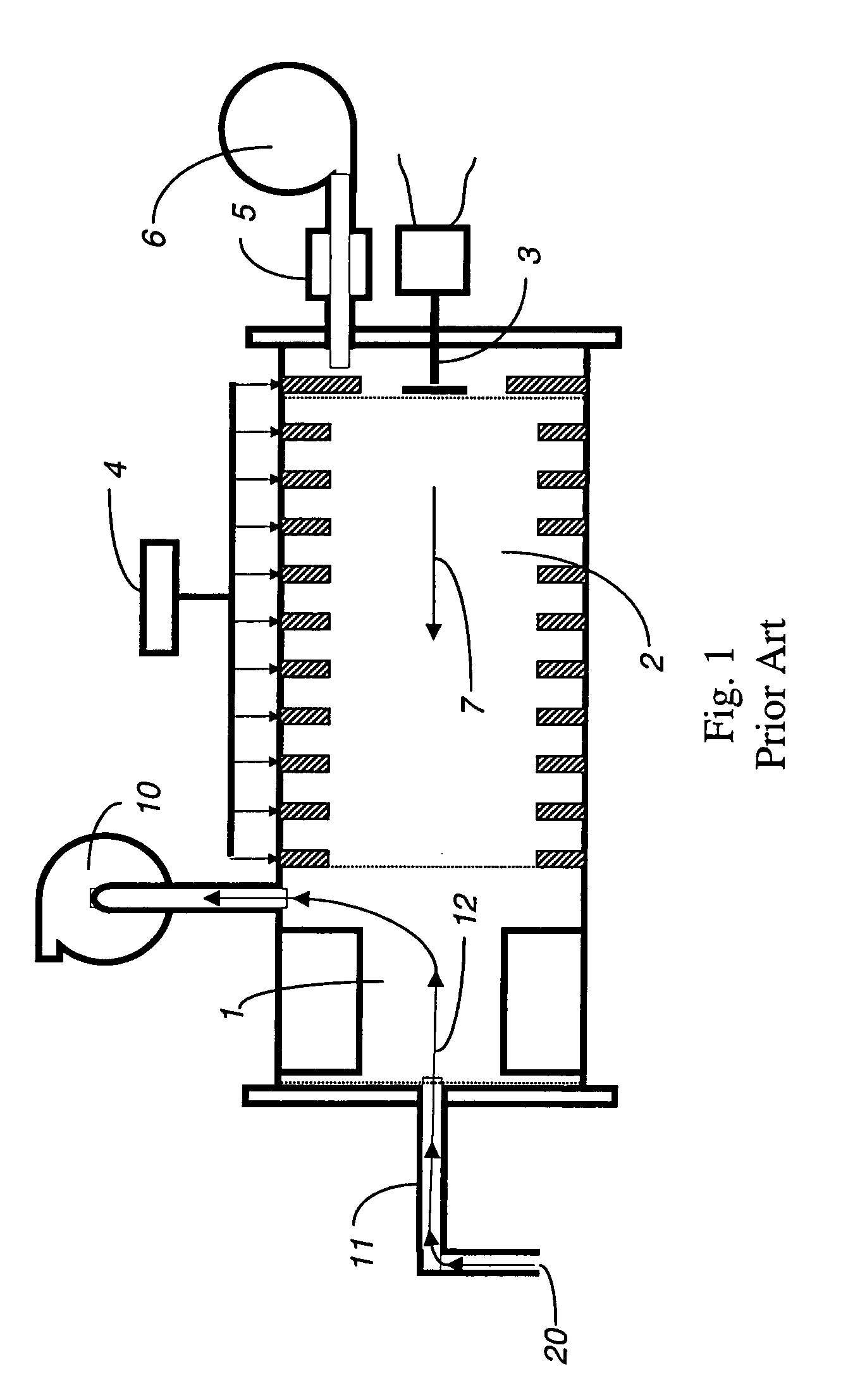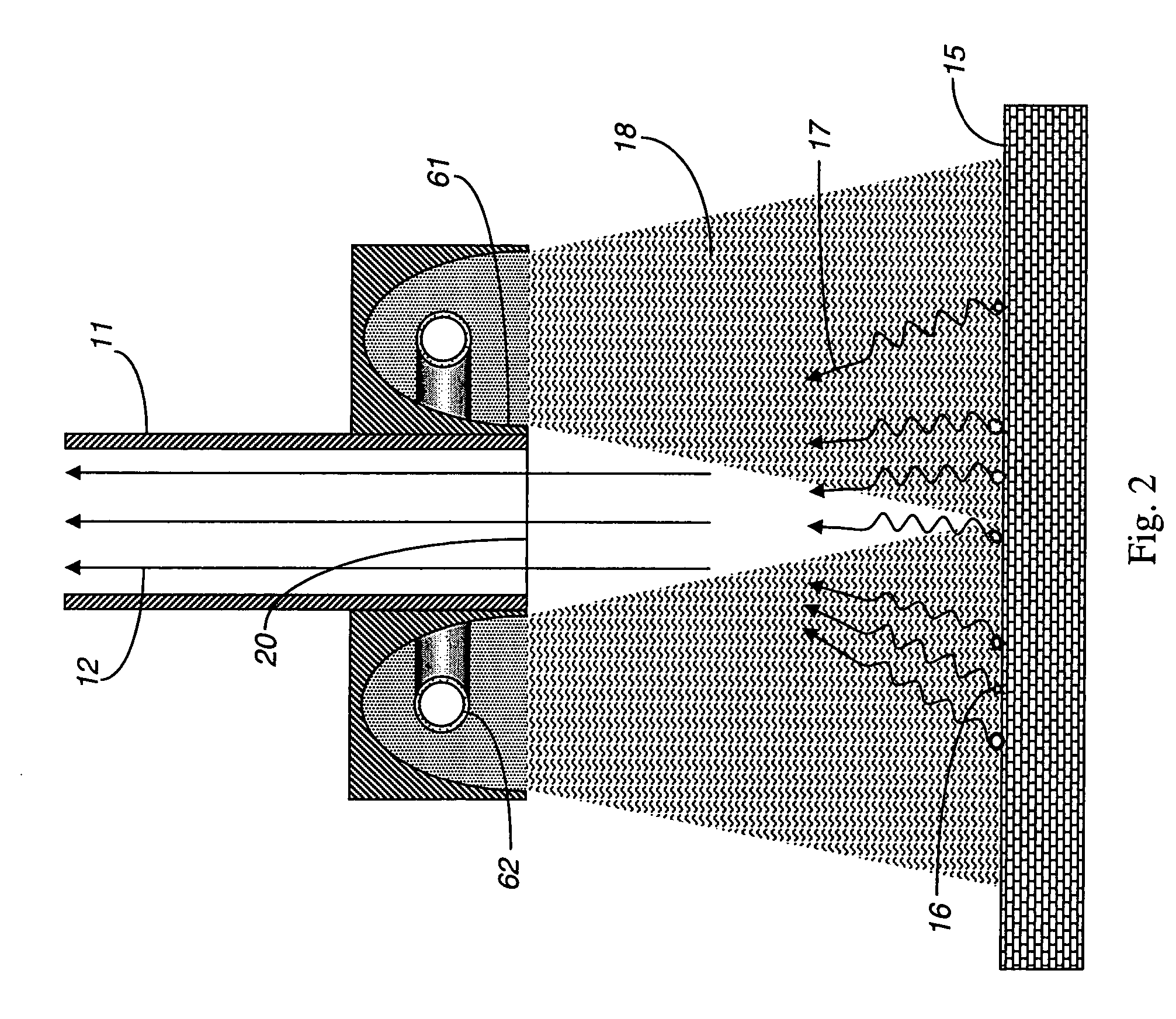Flash vapor sampling for a trace chemical detector
a detection instrument and vapor sampling technology, applied in the direction of instruments, resistance/reactance/impedence, withdrawal sample devices, etc., can solve the problems of increasing the cost of absorbers, increasing so as to increase the emission of target vapor, and reduce the difficulty of concentrating.
- Summary
- Abstract
- Description
- Claims
- Application Information
AI Technical Summary
Benefits of technology
Problems solved by technology
Method used
Image
Examples
Embodiment Construction
[0026]An IMS is illustrated in FIG. 1. While various embodiments may differ in details, FIG. 1 shows basic features of an IMS that may be used in connection with the system described herein. The IMS includes an ion source 1, a drift tube 2, a current collector 3, a source of operating voltage 4 and a source of purified drift gas 5, possibly with its own gas pump 6. An IMS may already include a gas pump for gas sampling 10 and a tubular connection 11 between the ion source 1 and an external gas sampling inlet 20 that includes an orifice. Gas flow for the drift gas 7 moves through the drift tube 2. Sampling gas flow 12 moves from the external gas sampling inlet 20 through the tubular connection 11 and ion source 1 to the gas sampling pump 10.
[0027]FIG. 2 shows an exemplary embodiment for a system using an electrical discharge in a gas within a pulsed light lamp 62 provided proximal to the gas sampling inlet 20 that heats the target surface 15 in conjunction with the gas sampling syste...
PUM
| Property | Measurement | Unit |
|---|---|---|
| time | aaaaa | aaaaa |
| time | aaaaa | aaaaa |
| wavelengths | aaaaa | aaaaa |
Abstract
Description
Claims
Application Information
 Login to View More
Login to View More - R&D
- Intellectual Property
- Life Sciences
- Materials
- Tech Scout
- Unparalleled Data Quality
- Higher Quality Content
- 60% Fewer Hallucinations
Browse by: Latest US Patents, China's latest patents, Technical Efficacy Thesaurus, Application Domain, Technology Topic, Popular Technical Reports.
© 2025 PatSnap. All rights reserved.Legal|Privacy policy|Modern Slavery Act Transparency Statement|Sitemap|About US| Contact US: help@patsnap.com



